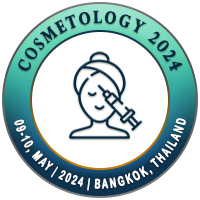
Trieu Dung Cuong
Hospital of Dermato Venereology HCMC, VietnamTitle: Role of sunscreen in skin cancer prevention
Abstract
The skin is the largest organ of the human body. It serves various functions, directly interacts with physical, chemical, and biological agents from the external environment. These agents can cause numerous skin diseases. Of these, the relationship between ultraviolet (UV) rays and skin cancer has been proved.
UV radiations act on tumor suppression genes and/or tumor proliferation genes, altering the activity of these genes and leading to a loss of cell proliferation control and the formation of tumors.
UVB causes mutations that change C to T or CC to TT, accounting for the majority of mutations causing squamous cell carcinoma (SCC). UVA causes mutations through the generation of the main oxidant radicals, where OH- radicals cause G to T.
Sunscreen consists of inorganic and organic substances that, when applied to the skin, reduce the intensity of ultraviolet rays and possibly visible light rays reaching the stratum corneum of the skin.
The effectiveness of sunscreens against UVA is expressed by the UVA protection factor (UVA-PF), and against UVB by the sun protection factor (SPF). A broad-spectrum sunscreen should have a critical wavelength of at least 370 nm and a UVA-PF rating of at least 1/3 of the SPF.
The role of cancer protection of sunscreen has been illustrated in many studies. In skin cancer treatment guidelines of a few societies, sun protection is recommended through physical shielding and the use of broad-spectrum sunscreen.
There are also some specific information on the usage of sunscreen in both adult and children will be provided in this presentation.
Biography
Trieu Dung Cuong has completed his Master at the age of 26 years and Residency at the age of 27 years from Hanoi Medical University, Vietnam. He is now working at Department of Cosmetic Dermatology, Ho Chi Minh City Hospital of Dermato Venereology

